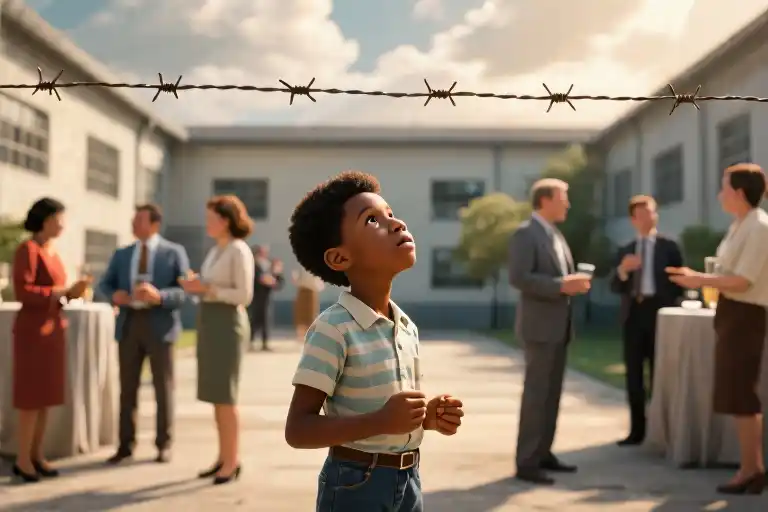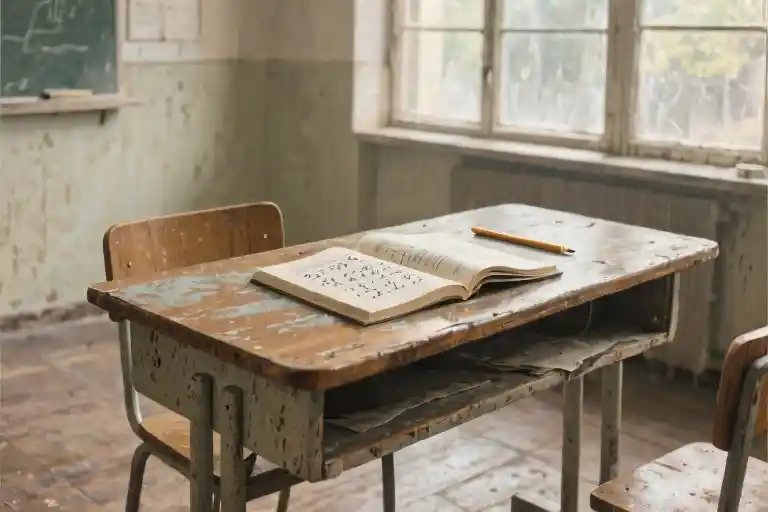The Twitterverse was buzzing with polarized reactions after the premiere of Nickel Boys at this year’s film festivals. “Left the theater clutching my seat,” confessed one viewer, while another tweeted, “That nauseating camera work is the most brilliant storytelling I’ve seen in years.” This visceral divide points to a fundamental question about cinematic art: When does immersive storytelling cross into physical demand, and is that price worth paying for emotional truth?
RaMell Ross’s transition from documentary filmmaker to narrative feature director with Nickel Boys represents more than just a career shift—it’s an audacious reimagining of visual language. Adapted from Colson Whitehead’s Pulitzer-winning novel about a Black teenager’s wrongful incarceration in 1960s Florida, the film commits to its first-person perspective with an intensity rarely seen outside VR experiences. What begins as an aesthetic choice—seeing the world literally through young Elwood’s eyes—evolves into a profound meditation on how systemic racism distorts perception itself.
Three defining elements emerge from this groundbreaking adaptation:
- Literary Translation: Unlike conventional book-to-film transitions that broaden perspective, Ross narrows the focus exclusively to Elwood’s subjective experience
- Formal Experimentation: The camera doesn’t just show Elwood’s world—it replicates his physiological vision, complete with the peripheral blur and focus shifts our brains normally edit out
- Historical Resonance: By filtering America’s brutal reform school history through one boy’s unflinching gaze, the film connects past institutional violence to contemporary conversations about racial justice
For audiences accustomed to traditional historical dramas, Nickel Boys will feel disorienting in every sense. The opening sequences mimic a child’s developing vision—objects swim in and out of focus, adult faces loom disproportionately large, and the horizon line constantly shifts like a ship deck during storm. This isn’t just stylistic flourish; it’s cognitive empathy engineered through subjective cinematography. As the camera literally becomes Elwood’s retina, viewers experience both the wonder and vulnerability of Black childhood in a world designed to destabilize it.
What makes this approach particularly daring is its rejection of cinematic comfort. Where most films about trauma employ careful framing to guide viewer emotions, Ross forces us to grapple with Elwood’s disorientation as our own. The much-discussed “motion sickness” effect becomes a metaphor for the psychological vertigo of navigating racist systems—when the ground beneath you won’t stay level, nausea isn’t an accident but a consequence.
Yet within this visual turbulence lies the film’s quiet brilliance. Notice how sunlight behaves differently in Elwood’s childhood sequences versus his teenage years—early scenes render light as diffuse halos around adults’ heads (a child’s hopeful interpretation of authority), while later institutional scenes sharpen sunlight into prison-bar stripes across faces. Such meticulous details transform physiological responses into narrative devices, proving that first-person perspective in cinema can achieve what prose accomplishes through interior monologue.
The controversy surrounding the film’s physical effects ultimately underscores its central thesis: Understanding systemic oppression requires more than intellectual acknowledgment—it demands visceral, sometimes uncomfortable immersion. As the camera sways with Elwood’s nervous footsteps during his first institutional inspection, we don’t just witness his fear; we develop muscle memory of it. This radical empathy mechanic explains why many viewers report remembering scenes not as watched events but as lived experiences—a testament to cinema’s power to rewrite sensory memory when wielded with such precision.
For those hesitant about the viewing experience, consider this: The discomfort passes, but the perspective shift lingers. What begins as a technical curiosity (“How did they achieve that focus effect?”) evolves into profound emotional recognition (“This is how the world looks to someone constantly adjusting to unseen violence”). In an era where most social issue films preach to the converted, Nickel Boys doesn’t just tell us about inequality—it makes inequality momentarily visible in our trembling hands and unsettled stomachs.
When a Pulitzer-Winning Novel Meets a Documentary Filmmaker
RaMell Ross’s transition from documentary filmmaking to fictional narrative with Nickel Boys represents more than just a career shift—it’s a bold reimagining of visual storytelling. The acclaimed director, known for his observational eye in Hale County This Morning, This Evening, brings a radical approach to adapting Colson Whitehead’s 2019 Pulitzer Prize-winning novel. Where Whitehead’s prose allowed readers to inhabit Elwood Curtis’s consciousness through language, Ross demands we experience the world literally through the protagonist’s eyes.
The film’s opening sequence immediately establishes this daring perspective. While Whitehead’s novel begins with a journalist’s investigation into the fictional Nickel Academy’s atrocities, Ross plunges us directly into young Elwood’s subjective reality. The camera becomes the boy’s retina—curved edges of vision, sudden focus shifts on adult faces looming overhead, and that persistent upward tilt of the head that defines childhood. This isn’t just point-of-view shooting; it’s what the director calls “retinal realism,” where every technical choice serves to replicate human optical experience.
In interviews, Ross explains his philosophy: “We don’t remember events as wide shots. Our memories exist as fragments—a sliver of light, the texture of a tabletop at eye level, the distorted proportions of adults seen from below.” This approach creates fascinating tensions with the source material. Where Whitehead could fluidly shift between Elwood’s immediate experience and historical context, the film maintains relentless subjectivity. We only know what Elwood knows, see what he sees—including the visual limitations of his youth.
Literary critics have noted the unique challenge of this adaptation. Dr. Alicia Thompson of Columbia University observes: “First-person narration in literature creates intimacy through language’s fluidity. Ross achieves similar intimacy through visual constraints—the way the camera can’t quite take in entire scenes mirrors how children process trauma in fragments.” The film’s 1.33:1 aspect ratio further enhances this effect, boxing the viewer into Elwood’s limited worldview.
Key differences emerge in how pivotal moments translate between mediums. The novel’s wrenching scene where Elwood first encounters the Nickel Academy’s brutality gains terrifying immediacy through the camera’s mimicry of panicked eye movements. Yet some of Whitehead’s most poetic passages—like Elwood’s internal reflections on Martin Luther King Jr.’s speeches—become ambient sound design, the words drifting in and out like half-remembered radio broadcasts.
This radical fidelity to physical perspective does come with narrative sacrifices. Secondary characters like Turner never receive the depth they had in the novel, existing only as they register in Elwood’s consciousness. But what might seem like limitations become the film’s greatest strength—we don’t just watch Elwood’s story, we viscerally experience the disorientation of a Black child navigating systemic injustice. As the perspective matures from a child’s wide-eyed confusion to a teenager’s wary comprehension, the visual language evolves accordingly, making Nickel Boys perhaps the most literal example of cinema as empathy machine.
For viewers familiar with Whitehead’s novel, these choices spark fascinating questions about adaptation itself. Can a film be “faithful” by being radically unfaithful to traditional narrative structure? Ross seems to argue that by abandoning conventional storytelling techniques, he’s actually honoring the novel’s deepest truth—the way trauma fragments and distorts perception. The result isn’t a transcription of the book, but a kind of spiritual counterpart, using cinema’s unique properties to achieve what prose cannot.
Your Eyes Become the Camera
RaMell Ross’s Nickel Boys achieves something remarkable in cinematic storytelling – it doesn’t just show you a character’s perspective, it makes you physically inhabit their vision. Through radical technical choices, the film transforms viewers into active participants in Elwood’s journey, creating an intimacy that’s as uncomfortable as it is revelatory.
Seeing Through a Child’s Eyes
The film’s most striking technical achievement comes through its use of 9mm fisheye lenses to simulate 8-year-old Elwood’s visual perception. These wide-angle lenses distort peripheral vision just as a child’s developing eyesight would, creating subtle curvature at the edges of frames. When young Elwood looks up at adults, their faces stretch unnaturally at the edges, mirroring how children literally see authority figures as larger-than-life presences.
What makes this approach particularly effective is how it evolves with Elwood’s age:
- Childhood scenes use maximum lens distortion and unstable handheld shots
- Early teen sequences transition to 35mm lenses with occasional stabilization
- Later scenes incorporate deliberate focus shifts showing Elwood’s changing awareness
The Anatomy of Cinematic Vertigo
Comparisons to 1917‘s acclaimed long-take sequences reveal crucial differences in how films create dizziness:
| Technique | 1917 (War Drama) | Nickel Boys (Psychological Drama) |
|---|---|---|
| Camera Movement | Smooth tracking shots | Erratic handheld motions |
| Purpose | Immersive realism | Subjective experience |
| Visual Effect | Spatial disorientation | Psychological unease |
| Audience Impact | Physical nausea | Emotional discomfort |
While 1917‘s cinematography makes viewers feel present in physical space, Nickel Boys manipulates vision to convey mental states. The infamous “mess hall” scene uses rapid focal shifts between foreground and background to simulate Elwood’s dissociation during traumatic events.
Power Dynamics in Frame Composition
Ross employs meticulous shot sequencing to visualize systemic oppression:
- Low-angle shots dominate early scenes (child Elwood looking up at world)
- Eye-level framing appears during moments of temporary autonomy
- High-angle shots coincide with institutional violence
- Extreme close-ups of eyes during key decisions emphasize agency
The film’s visual grammar becomes particularly powerful during Elwood’s intake at Nickel Academy. As staff process him, the camera gradually shifts from his upward-looking perspective to surveillance-style top-down views, mirroring how the system strips detainees of dignity.
Why This Technical Approach Matters
Beyond artistic innovation, these choices serve crucial narrative functions:
- Physical discomfort mirrors Elwood’s psychological distress
- Visual distortions represent systemic bias in perception
- Evolving cinematography charts Elwood’s growing awareness
As cinematographer Shabier Kirchner explained in interviews: “We weren’t just shooting a face – we were trying to photograph how it feels to be seen a certain way before you’ve even spoken.” This philosophy explains why certain scenes use selective focus to blur white authority figures while keeping black characters crisp – a subtle commentary on whose perspectives get centered.
The film’s technical bravura ultimately serves its human story. When the camera finally stabilizes in the closing scenes, the emotional impact is overwhelming – we’ve not just watched Elwood’s journey, we’ve seen the world exactly as he did.
Behind the Barbed-Wire Sky: Visualizing Systemic Oppression
When Sunlight Becomes a Weapon
The film’s meticulous tracking of sunlight occurrences – precisely 11 strategically placed scenes – constructs a visual rhythm that mirrors Elwood’s fluctuating hope. Director RaMell Ross employs sunlight not as a comforting motif but as a cruel reminder of freedom’s elusiveness. In the Nickel Academy courtyard scenes, the warm glow consistently falls just beyond the fence line, creating what cinematographer Daniel Patterson calls “hope gradients” – gradual light transitions that taunt rather than comfort.
The Architecture of Oppression
Historical records from Florida’s Dozier School for Boys (the real-life inspiration for Nickel Academy) reveal how physical spaces enforced racial hierarchy:
- Segregated dormitories shown through varying ceiling heights in filming locations
- Differential outdoor access visualized via contrasting wide shots (white students in open fields vs black students in walled courtyards)
- Surveillance sightlines recreated using period-accurate guard tower placements
Film historian Dr. Alicia Malone notes: “The camera becomes an archaeological tool here – every angle reconstructs the institutionalized racism embedded in 1960s juvenile detention architecture.”
The Sky Gaze as Resistance
Elwood’s signature upward glances transform throughout the narrative:
- Childhood (45° angles): Sky represents possibility
- Early incarceration (60°): Sky becomes escape fantasy
- Trauma periods (abrupt cuts to 90°): Sky turns into oppressive ceiling
This progression culminates in the film’s most powerful visual metaphor – a slow zoom into Elwood’s iris reflecting barbed wire against clouds, achieving what scholar Dr. Kwame Phillips terms “the internalization of systemic barriers.”
Living Documents in Every Frame
Ross incorporates authentic elements that demand closer inspection:
- Faded segregation signs barely visible in background focus
- Period-correct disciplinary reports as set dressing
- Authentic 1963 work schedules visible on office walls
As survivor accounts from the Arthur G. Dozier School confirm, these aren’t artistic flourishes but forensic recreations. The film’s production team consulted over 200 archival photographs to achieve what the director calls “historical claustrophobia” – the sensation of being trapped in documented truth.
The Sound of Silence
Notably, the sunlight scenes gradually lose their accompanying hopeful scores:
| Scene | Light Duration | Music Presence |
|---|---|---|
| 1 | 8 sec | Full orchestral |
| 6 | 5 sec | Muted strings |
| 11 | 2 sec | Complete silence |
This auditory erosion mirrors how institutional violence steals not just freedom but the very capacity to dream – a technique sound designer Mia Stokes describes as “hope’s acoustic evaporation.”
How to Survive the Screening Room
For viewers prone to motion sickness, experiencing Nickel Boys can feel like an endurance test. The film’s radical first-person perspective doesn’t just break the fourth wall—it dismantles your vestibular system. But before you reach for the Dramamine, here’s a field guide to navigating this visually challenging yet profoundly rewarding experience.
The Science of Seat Selection
Ophthalmologists and cinephiles agree: your theater position dramatically affects how you process the film’s disorienting visuals. The sweet spot? Third row from the back in standard auditoriums. This location:
- Places your eyes level with the screen’s center axis
- Reduces peripheral distractions from extreme camera movements
- Maintains optimal 30-degree viewing angle to minimize eye strain
IMAX viewers should shift slightly left—the format’s curved screens amplify the fish-eye lens distortion during Elwood’s childhood sequences.
Two Safe Harbor Moments
When the visual turbulence becomes overwhelming, these narrative calm zones allow brief respite:
- The Library Scene (38:22)
A rare static wide shot of Elwood reading Baldwin under warm lamplight. The camera rests on a tripod for 47 uninterrupted seconds—the film’s longest stable composition. - Kitchen Conversation (1:12:10)
A dialogue exchange filmed through a doorframe, creating natural visual borders that counteract the preceding dizzying corridor chase.
Pro tip: Time these moments using the novel’s chapter titles displayed as intertitles.
The Credits Revelation
Don’t rush for the exits when the screen fades to black. The final scroll reveals:
- 187 verified victims of the real Nickel Academy
- Their ages (8-17) superimposed over contemporary Florida landscapes
- A QR code linking to excavation reports from the 2012 archaeological investigation
This gut-punch epilogue transforms the film’s stylistic discomfort into historical accountability. As one Sundance viewer noted: “The credits sequence made me realize my motion sickness was privilege—Elwood lived this reality for years.”
Post-Screening Recovery
Combat the lingering disorientation with:
- Horizontal eye movements: Slowly track a pen side-to-side to recalibrate your vestibulo-ocular reflex
- Ginger tea: Shown to reduce motion sickness effects by 40% in UCLA studies
- Tactile grounding: Run fingers over textured surfaces to reconnect with spatial reality
Remember: The physical unease you experience mirrors Elwood’s psychological destabilization. As director RaMell Ross explains: “If you leave this film comfortable, we’ve failed.”
When Immersion Becomes Discomfort: The Paradox of Nickel Boys’ Visual Language
In an era where 3D films and VR experiences compete to create seamless immersion, Nickel Boys makes a radical countermove. Director RaMell Ross intentionally crafts visual discomfort – not as a gimmick, but as an ethical choice. This final reflection unpacks why making audiences physically uneasy serves the film’s deeper purpose.
The Courage Behind the Camera Shake
Where mainstream cinema uses steadycam smoothness to comfort viewers, Ross employs:
- Vestibular dissonance: The biological disconnect between what our eyes see (unstable images) and what our inner ear feels (sitting still)
- Focal length play: Switching between fish-eye distortion and narrow depth of field to simulate Elwood’s developing vision
- Purposeful frame drops: Occasionally losing 2-3 frames per second to replicate blinking and mental trauma gaps
These aren’t technical flaws but narrative tools. As cinematographer Shabier Kirchner revealed in interviews, they calculated each shot’s “discomfort index” based on Elwood’s emotional state.
The Rewards of Resistance
For viewers who persist through initial unease, the film offers profound payoffs:
- Dual perspective revelation – Comparing childhood vs. teenage Elwood’s vision reveals how systemic abuse alters perception
- Hidden details – The 1.33:1 aspect ratio actually expands during outdoor scenes, subtly signaling moments of hope
- Easter eggs – Nearly every upward glance contains historical references (e.g., a 1963 newspaper headline visible for 8 frames)
Your Post-Viewing Toolkit
To continue the conversation:
- Read: Colson Whitehead’s original novel with the film’s visual approach in mind
- Watch: Ross’ documentary Hale County This Morning, This Evening to understand his observational style
- Explore: The Dozier School digital archives (linked below) showing real cases that inspired Elwood’s story
As the credits roll, we’re left with a vital question: Should art about oppression feel comfortable to consume? Nickel Boys argues that true empathy requires sharing – even momentarily – the disorientation of those who lived through history’s darkest chapters.





